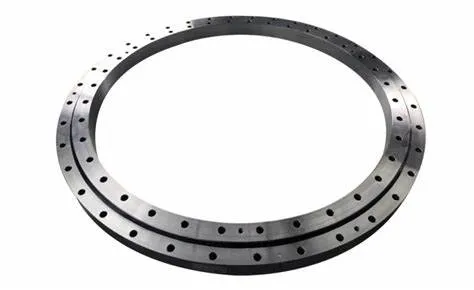-
Cangzhou Yulong Steel Co., Ltd.
-
Phone:
+86 13303177267 -
Email:
admin@ylsteelfittings.com
- English
- Arabic
- Italian
- Spanish
- Portuguese
- German
- kazakh
- Persian
- Greek
- French
- Russian
- Polish
- Thai
- Indonesian
- Vietnamese
- Zulu
- Korean
- Uzbek
- Hindi
- Serbian
- Malay
- Ukrainian
- Gujarati
- Haitian Creole
- hausa
- hawaiian
- Hebrew
- Miao
- Hungarian
- Icelandic
- igbo
- irish
- Japanese
- Javanese
- Kannada
- Khmer
- Rwandese
- Afrikaans
- Albanian
- Amharic
- Armenian
- Azerbaijani
- Basque
- Belarusian
- Bengali
- Bosnian
- Bulgarian
- Catalan
- Cebuano
- China
- China (Taiwan)
- Corsican
- Croatian
- Czech
- Danish
- Esperanto
- Estonian
- Finnish
- Frisian
- Galician
- Georgian
- Kurdish
- Kyrgyz
- Lao
- Latin
- Latvian
- Lithuanian
- Luxembourgish
- Macedonian
- Malgashi
- Malayalam
- Maltese
- Maori
- Marathi
- Mongolian
- Myanmar
- Nepali
- Norwegian
- Norwegian
- Occitan
- Pashto
- Dutch
- Punjabi
- Romanian
- Samoan
- Scottish Gaelic
- Sesotho
- Shona
- Sindhi
- Sinhala
- Slovak
- Slovenian
- Somali
- Sundanese
- Swahili
- Swedish
- Tagalog
- Tajik
- Tamil
- Tatar
- Telugu
- Turkish
- Turkmen
- Urdu
- Uighur
- Welsh
- Bantu
- Yiddish
- Yoruba

Dec . 04, 2024 01:05 Back to list
weld pipe
Understanding Welded Pipe An In-Depth Look
Welded pipe, an essential component in various industries, plays a crucial role in the transportation of fluids and gases. Unlike seamless pipes, which are manufactured without any joints, welded pipes are created by rolling steel plates into a cylinder and then welding the edges together. This article explores the production, advantages, applications, and considerations surrounding welded pipes.
Production Process
The production of welded pipe typically involves several steps. First, steel plates or strips are gathered and cut to the desired width. These materials are then heated and rolled into a cylindrical shape. Once the desired diameter is achieved, the edges of the steel are joined together through one of several welding methods, including Electric Resistance Welding (ERW), Submerged Arc Welding (SAW), or Laser Beam Welding (LBW). After welding, the pipes go through a series of tests to ensure their integrity and strength, such as hydrostatic testing or non-destructive testing to identify any potential flaws.
The final stage in the production process often includes applying a protective coating to enhance resistance to corrosion and wear, crucial for applications in harsh environments.
Advantages of Welded Pipe
Welded pipes come with several advantages that make them a popular choice across various sectors. One significant benefit is their cost-effectiveness. The manufacturing process of welded pipes is generally less expensive than that of seamless pipes, mainly due to lower material usage and simpler production methods.
Another advantage is the availability of a wide range of sizes and wall thicknesses. Welded pipes can be produced in larger diameters than seamless pipes, making them ideal for transporting large volumes of fluids or gases. This flexibility in specifications allows engineers and designers to select pipes tailored to their specific needs.
Furthermore, the weld seam in welded pipes provides a uniform structure, which can enhance certain properties such as ductility and ease of fabrication. These pipes can also be produced quickly, which is a significant advantage for projects requiring expedited delivery timelines.
weld pipe

Applications
Welded pipes are widely used in various industries, including construction, oil and gas, water supply, and manufacturing. In the construction industry, they serve as structural components in buildings, bridges, and towers. In the oil and gas sector, welded pipes are essential for transporting crude oil, natural gas, and petroleum products over long distances.
Moreover, in water supply systems, welded pipes are utilized for distributing drinking water and in sewage systems. Their durability and resistance to corrosion make them suitable for both above-ground and underground applications. In industrial settings, welded pipes are employed in the manufacturing of heat exchangers, boilers, and pressure vessels, where high-quality and reliable piping is essential.
Considerations and Challenges
Despite their advantages, using welded pipes does come with considerations. One of the primary concerns is the quality of the weld. Poor welding practices can lead to weak joints that may fail under pressure, causing leaks or catastrophic failures. It is crucial for manufacturers to adhere to stringent quality standards and inspections to ensure reliable products.
Another challenge is the susceptibility of welded pipes to corrosion at the welded joints. While many welded pipes are coated for protection, over time, environmental factors can lead to deterioration. Regular maintenance and inspections are necessary to ensure the longevity and integrity of these pipes.
Conclusion
Welded pipes are a vital component across multiple industries, offering an economical and versatile solution for the transportation of fluids and gases. Understanding their production process, benefits, applications, and challenges helps stakeholders make informed decisions in their selection and usage. As industries continue to evolve, the demand for high-quality welded pipes remains essential for building sustainable infrastructure and ensuring efficient transport systems. By adhering to best practices and maintaining rigorous quality control, welded pipes will continue to serve as a backbone for various applications for years to come.
Latest news
-
ANSI 150P SS304 SO FLANGE
NewsFeb.14,2025
-
ASTM A333GR6 STEEL PIPE
NewsJan.20,2025
-
ANSI B16.5 WELDING NECK FLANGE
NewsJan.15,2026
-
ANSI B16.5 SLIP-ON FLANGE
NewsApr.19,2024
-
SABS 1123 FLANGE
NewsJan.15,2025
-
DIN86044 PLATE FLANGE
NewsApr.19,2024
-
DIN2527 BLIND FLANGE
NewsApr.12,2024
-
JIS B2311 Butt-Welding Fittings LR/SR 45°/90° /180°Seamless/Weld
NewsApr.23,2024











